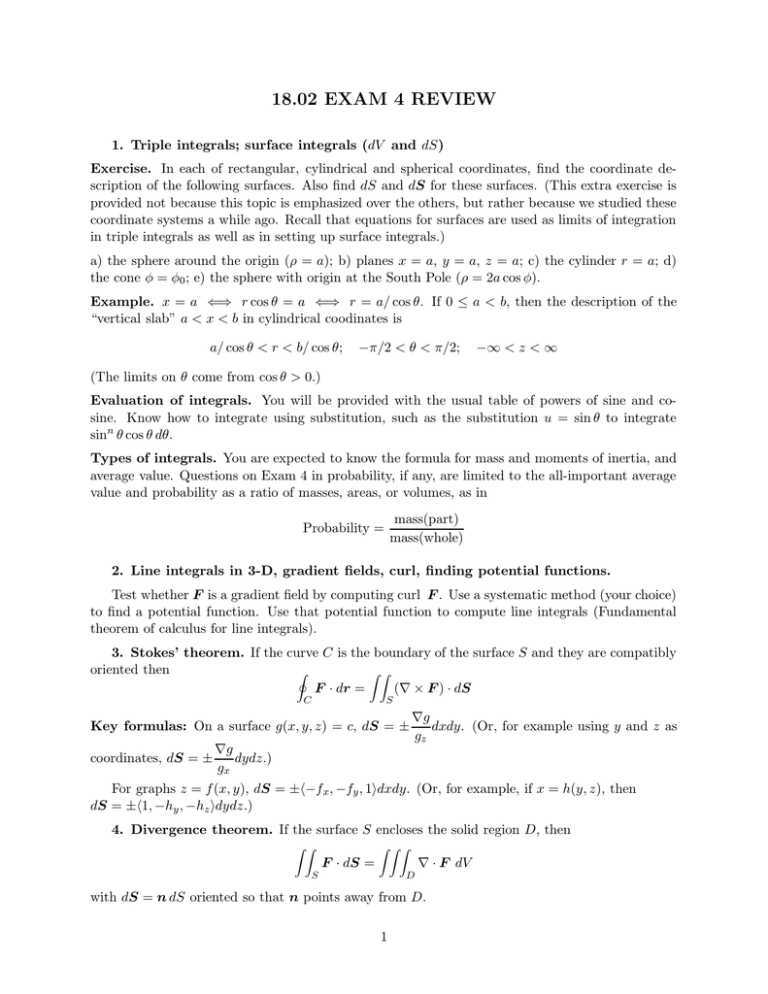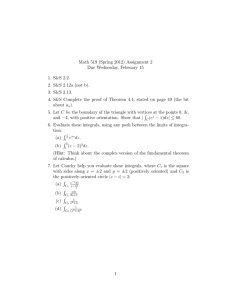18.02 EXAM 4 REVIEW
advertisement

18.02 EXAM 4 REVIEW 1. Triple integrals; surface integrals (dV and dS) Exercise. In each of rectangular, cylindrical and spherical coordinates, find the coordinate de­ scription of the following surfaces. Also find dS and dS for these surfaces. (This extra exercise is provided not because this topic is emphasized over the others, but rather because we studied these coordinate systems a while ago. Recall that equations for surfaces are used as limits of integration in triple integrals as well as in setting up surface integrals.) a) the sphere around the origin (� = a); b) planes x = a, y = a, z = a; c) the cylinder r = a; d) the cone π = π0 ; e) the sphere with origin at the South Pole (� = 2a cos π). Example. x = a ≤� r cos � = a ≤� r = a/ cos �. If 0 � a < b, then the description of the “vertical slab” a < x < b in cylindrical coodinates is a/ cos � < r < b/ cos �; −�/2 < � < �/2; −� < z < � (The limits on � come from cos � > 0.) Evaluation of integrals. You will be provided with the usual table of powers of sine and co­ sine. Know how to integrate using substitution, such as the substitution u = sin � to integrate sinn � cos � d�. Types of integrals. You are expected to know the formula for mass and moments of inertia, and average value. Questions on Exam 4 in probability, if any, are limited to the all-important average value and probability as a ratio of masses, areas, or volumes, as in mass(part) mass(whole) Probability = 2. Line integrals in 3-D, gradient fields, curl, finding potential functions. Test whether F is a gradient field by computing curl F . Use a systematic method (your choice) to find a potential function. Use that potential function to compute line integrals (Fundamental theorem of calculus for line integrals). 3. Stokes’ theorem. If the curve C is the boundary of the surface S and they are compatibly oriented then � F · dr = (⇐ × F ) · dS C S Key formulas: On a surface g(x, y, z) = c, dS = ± coordinates, dS = ± ⇐g dydz.) gx ⇐g dxdy. (Or, for example using y and z as gz For graphs z = f (x, y), dS = ±∞−fx , −fy , 1⇒dxdy. (Or, for example, if x = h(y, z), then dS = ±∞1, −hy , −hz ⇒dydz.) 4. Divergence theorem. If the surface S encloses the solid region D, then F · dS = S ⇐ · F dV D with dS = n dS oriented so that n points away from D. 1




